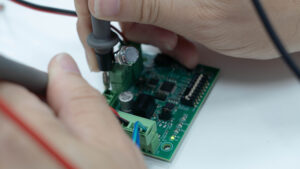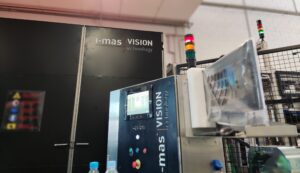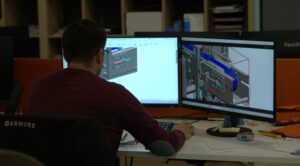In an industry where quality and safety are non-negotiable, machine vision has become a key tool for ensuring excellence in every product that reaches the consumer. Food factories are incorporating intelligent inspection systems that not only see, but understand what they observe. Thanks to multispectral cameras and advanced artificial intelligence algorithms, it is now possible to analyze texture, color, and freshness with a precision that far exceeds human capabilities.
Technological advances are making it possible to automate tasks that traditionally required an expert eye, reducing subjectivity and increasing process traceability. Today, food production lines can detect subtle defects, color variations, contaminants, or alterations in real time that previously went unnoticed.
Multispectral cameras: beyond the visible spectrum
Multispectral cameras capture information at wavelengths beyond the visible range of the human eye, analyzing the interaction of light with materials. This allows differences in composition, moisture, or freshness to be identified, even when the product appears visually correct.
For example, in fruits and vegetables, multispectral vision can detect ripeness, internal damage, or biological contamination. In meat products, it can assess fat distribution, oxidation levels, or the presence of foreign bodies. And in baked goods or snacks, the technology can monitor the degree of baking or the exact color of toasting, ensuring uniformity from batch to batch.
This capacity for in-depth analysis makes multispectral machine vision an indispensable ally in achieving the highest quality standards in the food industry.
AI and analysis of texture, color, and freshness
The real qualitative leap occurs when multispectral imaging is combined with artificial intelligence. Deep learning algorithms can be trained to recognize specific texture or color patterns associated with different levels of freshness or quality. Over time, these systems learn to distinguish between natural variations and actual defects, reducing false rejections and improving efficiency.
These types of systems not only inspect, but also learn from each batch. They analyze historical information, adjust parameters, and adapt to new references without the need for reprogramming. This allows factories to maintain consistent quality even with variable raw materials.
Real-time control and visual traceability
One of the major benefits of industrial vision applied to the food sector is complete traceability. Each inspection can be documented with images and data associated with the batch or unit manufactured, creating a verifiable visual record. This not only improves process transparency, but also strengthens consumer confidence and facilitates audits or certifications.
Furthermore, when integrated with industrial automation systems, visual inspection can trigger automatic corrective actions: removing a defective product, adjusting a temperature, or modifying line speed, all without human intervention. This predictive approach reduces waste and maximizes productivity.
The role of I-MAS in the food vision of the future
At I-MAS, we develop and integrate machine vision and industrial automation solutions tailored to the demands of the food industry. We design systems capable of inspecting texture, color, and freshness in real time, using multispectral cameras and AI algorithms trained to detect even defects invisible to the human eye.
Our goal is clear: to raise the standard of quality in food processes, ensuring safer, more consistent, and sustainable products. Because the future of food involves seeing beyond the visible, and artificial vision is the technology that is making this new generation of intelligent control possible.
Want to learn more about our services? Contact us or visit our projects section!



